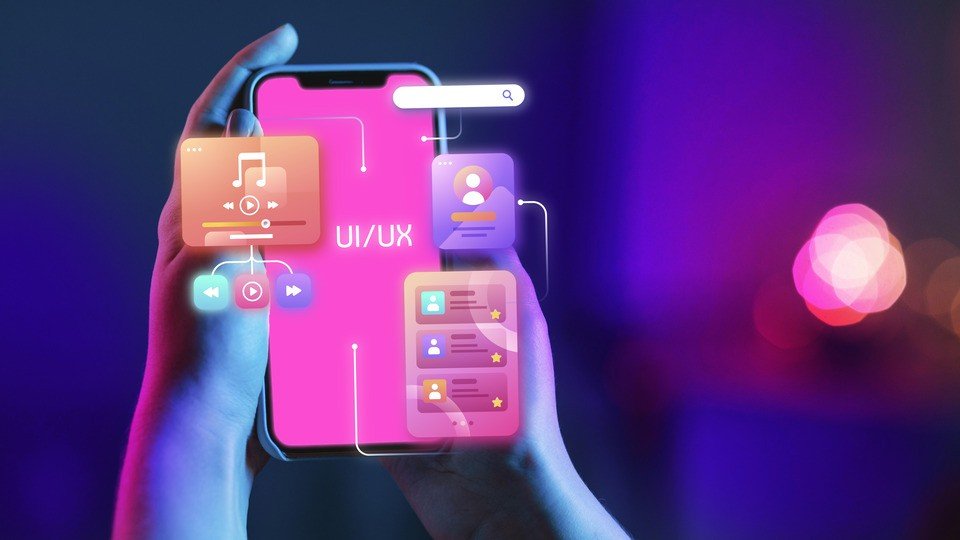Future of Multi-Device Design
The Rise of Seamless Multi-Device UX
Users no longer interact with technology on a single screen. They start an activity on one device and continue it on another; IE checking emails on a smartwatch, reading articles on a phone, finalizing work on a laptop, and watching content on a smart TV. Multi-device experience design is no longer a luxury, but rather an expectation.
What Defines a Strong Multi-Device Experience?
A truly seamless multi-device UX requires more than just responsive design. It must offer:
↳ Cross-Platform Consistency – Unified branding, layout, and UI behaviors across all devices.
↳ Context Awareness – Understanding the user’s intent based on the device being used.
↳ Seamless Handoff – The ability to pick up where the user left off, regardless of device.
↳ Real-Time Syncing – Cloud-based data integration to ensure continuity.
Example: Apple’s Handoff feature allows users to start writing an email on an iPhone and continue on a Mac.
Challenges in Multi-Device UX
Despite advancements in multi-device integration, several challenges persist:
Fragmented Ecosystems
Users mix and match devices from different manufacturers and platforms, leading to inconsistencies.
↳ Solution: Design platform-agnostic experiences that work across iOS, Android, Windows, and other systems.
Example: Google’s cloud-based ecosystem (Docs, Drive, Photos) ensures a smooth transition across any device.
Device-Specific Constraints
Each device has different screen sizes, input methods, and processing capabilities.
↳ Solution: Optimize for adaptive UX, not just responsive layouts. Tailor features to leverage each device’s strengths.
Example: Spotify’s mobile app is designed for quick interactions, while the desktop app prioritizes music management.
Continuity & User Friction
Users expect seamless transitions, but inconsistent authentication, file syncing, or UI mismatches create friction.
↳ Solution: Implement real-time syncing and single sign-on authentication across devices.
Example: Netflix’s ability to switch between devices mid-stream without restarting content.
Future Innovations in Multi-Device UX
AI-Powered Adaptive Interfaces
AI will contextually adjust UI elements based on the user’s environment and device.
↳ Example: Google Assistant can anticipate whether a user needs voice-based or screen-based assistance.
Spatial Computing & Wearables
The rise of spatial computing (Apple Vision Pro, Meta Quest) and wearables will redefine multi-device interaction.
↳ Example: Apple Vision Pro allows users to extend their Mac’s display into a mixed-reality workspace.
Device-to-Device Communication
Tech companies are expanding direct device communication without cloud dependency.
↳ Example: Samsung’s Quick Share enables instant file transfers across Galaxy devices without internet access.
Best Practices for Designing Multi-Device UX
To create a truly frictionless multi-device experience, designers must prioritize:
↳ Universal UI Design – Maintain consistency in visuals, typography, and interactions across devices.
↳ Real-Time Syncing – Enable cloud-based updates to ensure smooth transitions.
↳ Intelligent Device Handoff – Use AI to predict when a user wants to switch devices and pre-load relevant data.
↳ Adaptive Layouts – Build context-aware designs that shift based on screen size and input type.
Example: Adobe Creative Cloud allows seamless project switching between mobile, tablet, and desktop.
Conclusion: The Future is Seamless
As users demand continuous digital experiences, businesses that master multi-device UX will dominate the next era of interaction. Whether through AI-powered adaptation, spatial computing, or real-time syncing, frictionless cross-device design is no longer optional - it’s the future.
Final Call to Action: Brands and designers must rethink how users interact across ecosystems. Future-proofing UX means investing in seamless transitions, adaptive interfaces, and intelligent continuity to keep users engaged, regardless of device.










